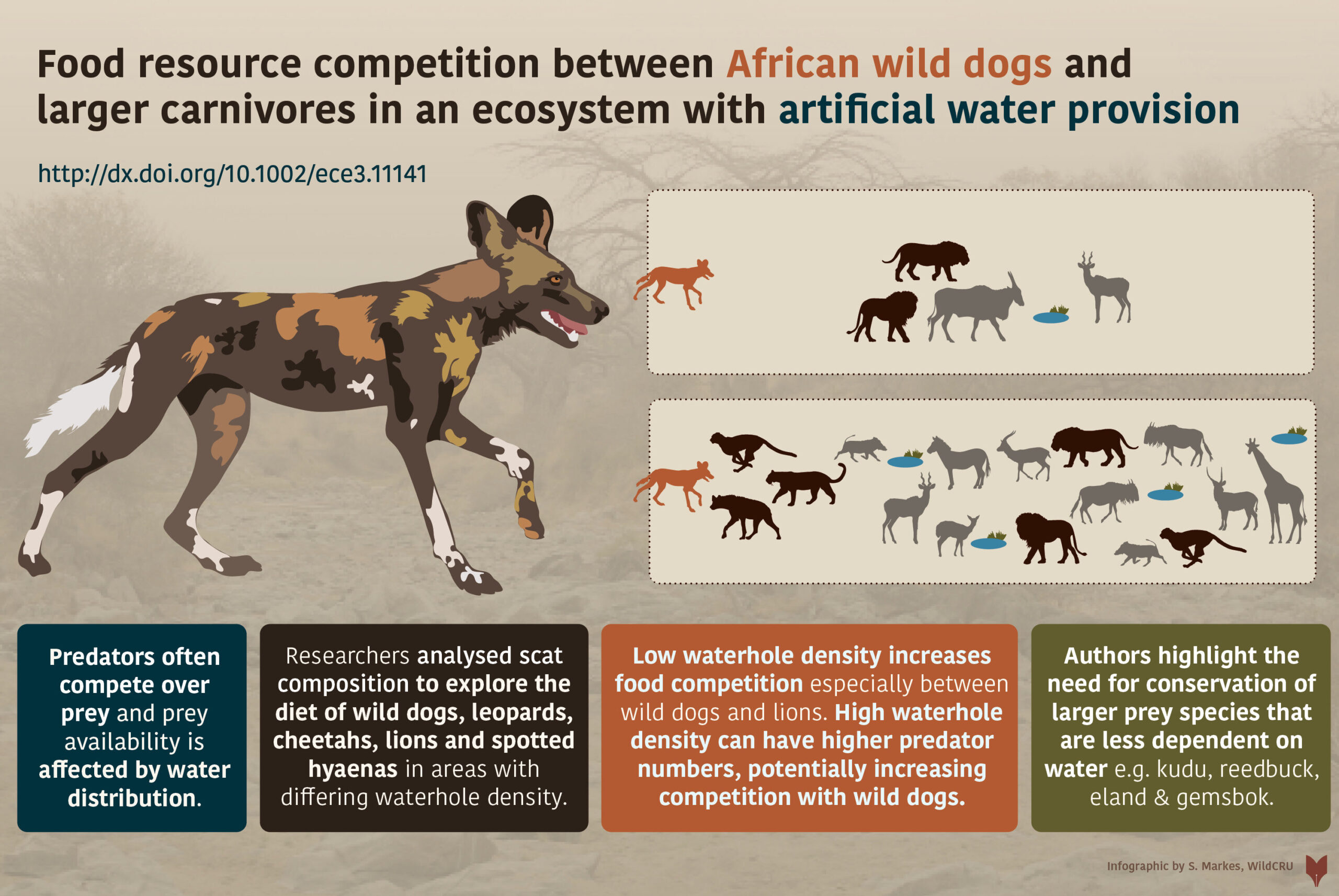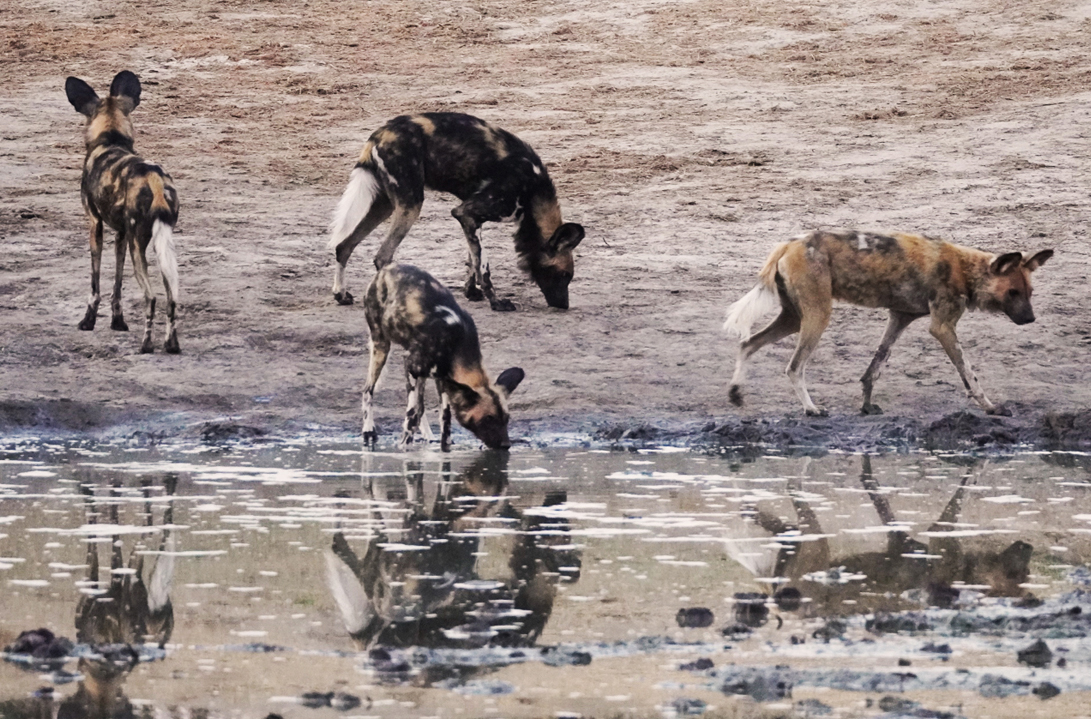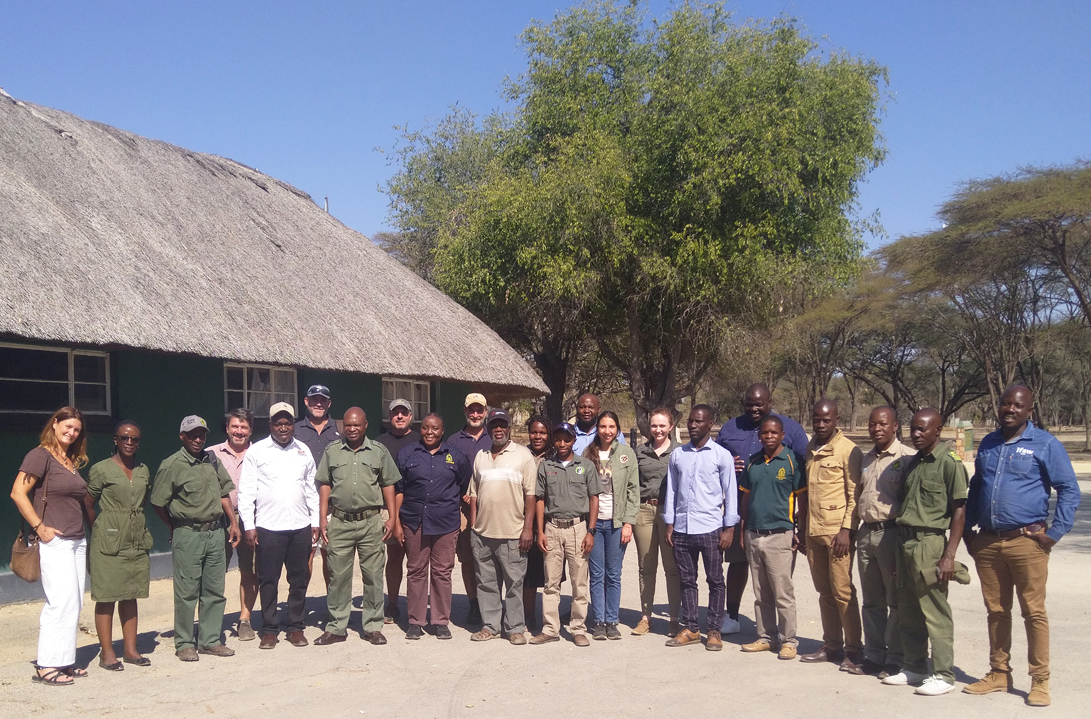This project aims to support wildlife conservation in Zimbabwe through developing a water management plan for Hwange National Park and its surroundings that benefits wildlife and people. This will be achieved through a collaborative process with Zimbabwe Parks & Wildlife Management Authority (ZIMPARKS) and other key stakeholders. The work follows on from a WildCRU PhD study exploring competition between African wild dogs (Lycaon pictus) and larger carnivores – especially lions and spotted hyaenas, in Hwange.
CONSERVATION CONTEXT
Hwange National Park is Zimbabwe’s largest natural reserve and forms part of the vast Kavango – Zambezi Transfrontier Conservation Area (KAZA) which spans five countries. Covering 14,651 km² in total, Hwange NP comprises semi-arid savannah where in the dry season animals are dependent on artificial waterholes. The Park is a stronghold for African wild dogs, with the population believed to comprise around 150 individuals. It is key area for conservation of this and other endangered species such as elephants and lions.
The Park’s current water management system was poorly planned and driven by the aims of the photographic tourism industry, with elephants as the priority species. Waterhole management has major implications for wildlife, tourism and local socio-economic development. Surface water availability shapes the distribution and abundance of herbivores (especially elephants), which impacts grazing and browsing pressure and thus vegetation structure. Herbivores are prey for carnivores hence their population numbers and distribution are also shaped by water – which can therefore be a major factor in the conservation of endangered species, such as African wild dogs. A scientifically based and legally enforceable water management plan is much needed for Hwange.


APPROACH
The project’s main aim is to create a policy brief within ZIMPARKS on water management for wildlife conservation in protected areas. The specific goals are to create a holistic water management plan, and a strategy to implement it.
The project’s first in-person workshop was conducted in August 2024, with stakeholders from the Zimbabwean Government, NGOs, national and international research institutions and safari operators.


PROJECT MEMBERS
This project involves more than 30 stakeholders. WildCRU’s Andrew Loveridge is the Principal Investigator (PI), Elisa Sandoval-Serés is the project leader and Lovemore Sibanda is the social surveys researcher. The project advisory board comprises ZIMPARKS Chief Ecologist – Roseline Mandisodza-Chikerema, Director of Scientific Services – Professor Edson Gandiwa and Hwange National Park ecologist – Daphine Madhlamoto. Painted Dog Conservation (PDC)’s Executive Director – Peter Blinston and key researcher – Dr. Esther van der Meer are also on the board along with Dr. Marion Valeix who holds a permanent research position at the French National Centre for Scientific Research (CNRS) and is leader of the Zone Atelier Hwange.